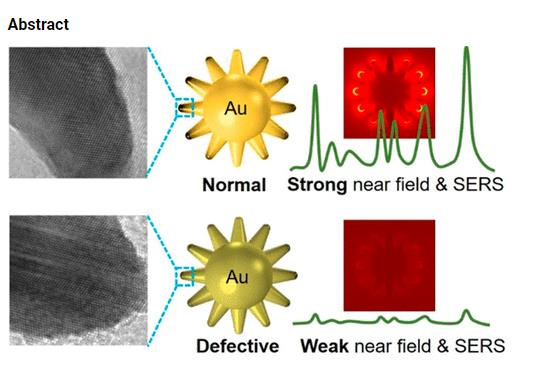Abnormally Weak Surface-Enhanced Raman Scattering Activity of Tip-Rich Au Nanostars: The Role of Interfacial Defects
作者:Guo Yujing;Zhu Shuyi;Bao Haoming;Fu Hao;Zhang Hongwen;Zhou Le;Li Yue;Cai Weiping
期刊:JOURNAL OF PHYSICAL CHEMISTRY LETTERS
卷(期)页:卷13 期10 页2428-2433
全文链接:https://pubs.acs.org/doi/10.1021/acs.jpclett.1c04088

期刊:JOURNAL OF PHYSICAL CHEMISTRY LETTERS
卷(期)页:卷13 期10 页2428-2433
全文链接:https://pubs.acs.org/doi/10.1021/acs.jpclett.1c04088

Designing and regulating the geometry of a given plasmonic metal (Au, Ag, etc.) has become one of the most efficient approaches to achieve highly active surface-enhanced Raman spectroscopy (SERS) substrates, but this work demonstrates that plain efforts on this may not be enough. Here, we report that the often-neglected inner crystal defects also have huge impacts on the SERS activity, through a case of Au nanostars (NSs) with good SERS geometry but rich in defects. The results suggest that the interfacial defects (twin boundaries and superlattices) in the NSs aggravate the electronic oscillation damping via reducing the free path of electron scattering. This eventually results in weak local electromagnetic fields near the NS surfaces (or weak SERS activity of the NSs). This study has demonstrated the huge impact of interfacial defects on SERS activity and thus has a significant guideline for the design and fabrication of efficient SERS substrates.
